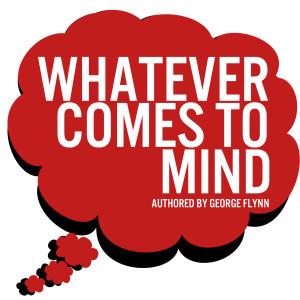 Many times on the Internet I have stumbled across posts about women in literature and film. The post that has manifested itself in many different ways has consisted of a multitude of images of women from many literary works. Beneath the images is a long unnamed quote that is advice to writers that I have seen many times over the past year: “Don’t write ‘strong’ women. Write interesting women.” This got me thinking, why should we write strong women, when there are many different women in the real world that don’t fall into that category?
Many times on the Internet I have stumbled across posts about women in literature and film. The post that has manifested itself in many different ways has consisted of a multitude of images of women from many literary works. Beneath the images is a long unnamed quote that is advice to writers that I have seen many times over the past year: “Don’t write ‘strong’ women. Write interesting women.” This got me thinking, why should we write strong women, when there are many different women in the real world that don’t fall into that category?
I can understand the concept of writing about interesting women versus strong women. Some of the best literary female characters in history are not strong, in contrast to Katniss Everdeen and Hermione Granger as their strength is defined by their independence, intelligence and their ability to survive.
On the other hand one of my favorite female literary characters is so malicious that I believe if she were a real person, everyone would shutter at the sight of her: Marquise de Merteuil from the 18th century French novel Les Liaisons dangereuses by Pierre Choderlos de Laclos. The novel takes place in 1700s French aristocracy, and must have been an extremely risqué novel for its time. Merteuil’s character was conniving, calculating and got what she wanted through sex and schemes which destroyed competition around her. She knew how to hide all of her volatile behaviors from the public, making her a demon in plain sight. She was a beautiful angel amongst the aristocracy, but was truly a destructive ice queen who ruined reputation for breakfast. Marquise de Merteuil is not an admirable character, but she is an incredibly interesting one. Yes, she is “strong” in her own way, but she doesn’t fight the good fight. She is unimaginably terrifying.
An excellent contrast is the meek and unstable Esther Greenwood from Sylvia Plath’s The Bell Jar published in 1963. Unlike the wicked Merteuil, Esther appears to be a very simple character who eventually experiences torment from her own mind. Esther experiences depression and insomnia. This can be explained by societal roles of women at the time, as well as her reaching adulthood. She attempts suicide multiple times and eventually enters a psychiatric hospital.
Esther is not a “strong” female character. She is faced with moments in her life that strike her down. She becomes lost and her sense of self deteriorates. She falls into a depression. She is not “strong” but she is interesting. She goes on a journey as she tries to overcome her depression.
I love characters who are unstable in literature and even film, because there is always room for a metamorphosis. However, I think the best type of character is one that is a victim of their own time. I think Catherine Earnshaw from Emily Bronte’s Wuthering Heights is the best example of this.
Wuthering Heights is a novel that, in my opinion, defines selfish love. Catherine Earnshaw’s unsuccessful love interest throughout the novel is Heathcliff. They are both quite volatile characters to each other. She selfishly loves him but marries a man named Edgar instead. Heathcliff does his best to harm her throughout the novel such as entering an abusive marriage with Edgar’s sister, Isabella. Catherine is not “strong,” compared to popular modern characters like Katniss or Hermione. She is witty and mischievous. She is just a woman, and I think that is very important.
I am not saying that women in reality should be wicked, depressed or cruel, but women should not be expected to have it all together. “Strong” women are not the answer to literature nor is it the only role a female can portray. Women can be strong, both in novels and reality. But they can also be much more than a gladiator princes or seductive sieren. Women should simply be who they are, human with diverse traits, emotions and weakness, whether it be in literature or reality.
George Flynn is a senior English major and can be reached at flynng@duq.edu.



